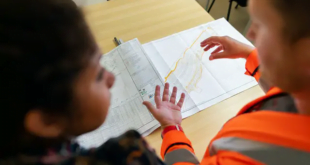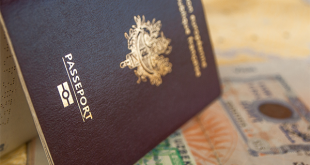Singapore has gained international recognition for its efficient and top-notch education system, which plays a pivotal role in shaping the nation’s progress and prosperity. This small island nation in Southeast Asia places a strong emphasis on education, making it a priority to nurture and develop its human capital. In this article, we will delve into the higher education system in Singapore. We’ll explore its various components, challenges, and opportunities for both local and international students.
Table of Contents
Why Singapore Education System is Successful
Singapore’s journey in higher education began in the 19th century when the first institutions were established to meet the demand for skilled workers. Over the years, the country’s focus on education intensified. As a matter of fact, the economic development and progress in Singapore have everything to do with the city-nation’s improvement in the fields of education and training.
And the revolution started at the end of World War II. Moreover, the most noticeable changes took place in the 1990s as the country started to focus its effort in encouraging creativity and capacity for innovation in its students. In 2004, the innovation went on as instruction evolved from focusing on rote memorization and repetition to a more conceptual understanding and problem-based learning.
The Singaporean government developed this concept called “Teach Less, Learn More”. Through this initiative, students get the opportunity to take classes in subjects that fit their aptitude and interest, and this from secondary school.
Another well-designed reform in the education system in Singapore is the “Every School a Good School”. With a set of measures, the government ensures that every school in Singapore gets all the necessary resources to develop personalized programs for their students, to raise professional standards for their teachers, to encourage innovation and to foster collaboration between institutions of education and the local communities.
Furthermore, the education system in Singapore fosters greater flexibility in learning, teaching and assessment. It then encourages self-directed learning for students in and out of school, with the long-term objective of encouraging lifelong learning for all Singaporean.
Read here about the best subjects to study in Singapore.
Facts about the Higher Education System in Singapore
Overall, the higher education system in Singapore is highly regarded for its quality, focus on practical skills, and commitment to research and innovation. As mentioned earlier, education plays a crucial role in shaping the country’s workforce. Here are some interesting facts about the higher education system in the nation-city:
Singapore’s Top Universities and World-Class Ranking of its Education System
Singapore has six autonomous universities, each specializing in various disciplines. These universities are the:
- National University of Singapore (NUS)
- Nanyang Technological University (NTU)
- Singapore Management University (SMU)
- Singapore University of Technology and Design (SUTD)
- SIT or Singapore Institute of Technology
- SUSS or Singapore University of Social Sciences
Both NUS and NTU consistently rank among the top universities not only in Asia but in the world. Both have a strong global recognition for their research output and academic excellence.
The other kinds of higher education institution in Singapore include Polytechnics and Institutes of Technical Education (ITE). Singapore has five polytechnics and several ITE. These institutions offer practical, skills-focused education in various fields to prepare students for the workforce. Polytechnics offer diploma courses in a wide range of fields, including engineering, business, media, and healthcare.
Strong Emphasis on STEM
Singapore places a significant emphasis on Science, Technology, Engineering, and Mathematics (STEM) education. The government invests in research and development to encourage innovation and technology-driven advancements.
Moreover, Singapore is at the forefront of integrating technology into education. E-learning platforms, digital resources, and virtual classrooms have become an integral part of the learning experience, enhancing accessibility and flexibility.
And as technology continues to evolve, so does the higher education landscape in Singapore. The government and educational institutions are likely to focus on interdisciplinary programs, experiential learning, and industry collaborations to stay ahead in the global education arena.
A Highly Centralized Governance
Singapore’s Ministry of Education (MOE) is in charge of overseeing the education system in the country, from Kindergarten through higher education and lifelong learning. It’s the institution which allocates funding, implement program syllabi, approves teaching material, and establishes national examinations.
The MOE also is the one managing teacher’s credentials, evaluation and promotion system. And lastly, they hire and assign principals and teachers to schools in the country.
High Number of High-Performing Students from Disadvantaged Social Groups
This is another unique characteristic of the higher education system in Singapore. Recent figures have attested the excellency of education, as among OECD countries, the Lion City stands out for its low percentage of low performing students.
But more interestingly, among the high-performing students, a high percentage of them comes from disadvantaged families. More precisely, 10% of top-performing students in Singapore are from low socio-economic status. This number falls to an average of 3% among other OECD countries.
Merit-Based Scholarships and Financial Aid
The government of Singapore subsidizes tuition fees for citizens and permanent residents at public universities, making higher education more accessible to local students. On the other hand, to support local and international students, the Singaporean government offers various scholarships and financial aid programs. These initiatives aim to make education more affordable for outstanding students. They also aim to attract and retain top talent.
Research and Innovation and International Collaboration
Singapore places great importance on research and innovation. The government has made significant investments in research facilities and incentives for research projects. Universities, therefore, actively engage in groundbreaking research across various disciplines, contributing to global advancements in science, technology, and social sciences.
Moreover, Singaporean universities actively collaborate with renowned institutions worldwide. And international partnerships in research, student exchange programs, and joint degrees are more and more frequent occurrences in the country.
Focus on Industry-Relevant Skills and Support for Lifelong Learning
The curriculum in Singaporean universities is designed to equip students with practical skills and knowledge relevant to the needs of the industry. Moreover, the government of Singapore provides opportunities for individuals to upgrade their skills and knowledge throughout their careers. The goal is to encourage lifelong learning for its students and workforce.
English as the Main Language of Instruction
English is one of the official languages in Singapore, and most students are fluent in it. The education system is primarily conducted in English, making it easy for international students to adapt. However, all students in the country are also required to study a second language, typically Mandarin, Malay, or Tamil.
Unique Academic Calendar
Lastly, the academic year in Singapore typically consists of two semesters, with the first semester starting in August/September and the second in January. It also includes shorter special terms and vacations within the academic calendar.
Singapore Higher Education System: Degree Structure
Before talking about the academic structure of higher education in Singapore, it’s important to get an overview of the pre-university part of the system.
In Singapore, students usually undergo 6 years of primary school, followed by 4 to 6 years of secondary school. After this follows 1 to 3 years of postsecondary school. This last one determines what type of tertiary education the student can follow. Those who want to apply directly to university choose the 6 years of secondary education, spending the 2 last years to take courses for the A-level exam (the equivalent to the secondary school-leaving exam).
Those who don’t take this path, then, opt for the post-secondary option, in which they can choose to get into polytechnics, Institute of Technical Education, Junior Colleges, Arts Institutions or a Polytechnic Foundation program.
At Polytechnics, students can earn a 3-year program diploma. And if they wish to follow up with a university education, they can earn this diploma without having to sit the A-level exams.
At ITE, students have shorter technical or vocational training programs that lead to a National ITE Certificate (Nitec). This certificate allows them to pursue vocational studies at a polytechnic or a university. Otherwise, they can stay at the ITE and earn instead a technical diploma or a work study diploma, allowing them also to enter a university afterward.
Finally, at Junior Colleges, students get 2 or 3 pre-university education in which they get ready to sit examinations to enroll in universities or polytechnics in Singapore.
Higher Education Academic Structure
The academic structure in Singapore follows the traditional three-tiered model:
- Bachelor’s degree programs are typically three to four years long
- Master’s degree programs span one to two years
- Doctoral programs involve original research work and can last up to five years.
The curriculum is typically divided into modules or courses, and students accumulate credits to fulfill the requirements for their chosen degree. Many programs offer a mix of core modules (required for the degree) and elective modules (chosen based on the student’s interests).
Grading System and Assessment Methods
The grading system in Singaporean higher education typically uses a scale of A+ to F. A+ is the highest grade and F represents a fail. Each grade corresponds to a specific grade point, which is used to calculate a student’s cumulative Grade Point Average (GPA) at the end of the program.
Moreover, assessments vary across different courses. It may include a combination of examinations, coursework assignments, projects, presentations, and group work. The weightage of each assessment component is typically outlined in the course syllabus.
Admission to Higher Education Institutions in Singapore
Singapore’s admission process for higher education institutions is rigorous yet fair. It considers not only academic achievements but also co-curricular activities and aptitude tests.
Academic Requirements
Academic excellence is highly valued, and students must meet certain grade thresholds to be eligible for university admission.
For details on the admission process at universities in Singapore, check our article on the subject.
Holistic Admissions and Co-Curricular Activities
Some universities have adopted a more holistic approach to admissions, considering the overall potential of applicants. Moreover, the Singaporean higher education system emphasize the importance of holistic development.
University students are therefore encouraged to participate in co-curricular activities (CCA), such as sports, clubs, societies, and community service. CCAs contribute to a well-rounded educational experience and help students develop leadership, teamwork, and organizational skills.
Conclusion
Singapore’s higher education system has evolved significantly over the years, becoming a magnet for students seeking quality education and promising career opportunities. With its focus on research, innovation, and adaptability, Singapore is poised to remain a top destination for higher education in the years to come.




 Aljawaz Your guide to study abroad
Aljawaz Your guide to study abroad 









